Related Research Articles

Seyyed Hossein Nasr is an Iranian philosopher and University Professor of Islamic studies at George Washington University.
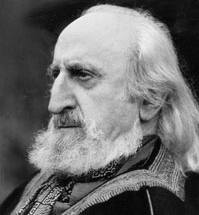
Frithjof Schuon was a Swiss metaphysician of German descent, belonging to the Perennialist or Traditionalist School of thought. He was the author of more than twenty works in French on metaphysics, spirituality, the religious phenomenon, anthropology and art, which have been translated into English and many other languages. He was also a painter and a poet.

The Traditionalist or Perennialist School is a group of 20th- and 21st-century thinkers who believe in the existence of a perennial wisdom or perennial philosophy, primordial and universal truths which form the source for, and are shared by, all the major world religions.
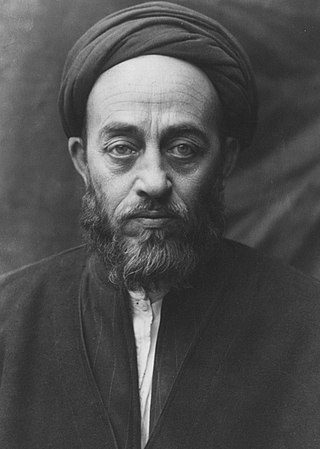
Muhammad Husayn Tabataba'i or Sayyid Mohammad Hossein Tabataba'i was an Iranian scholar, theorist, philosopher and one of the most prominent thinkers of modern Shia Islam. He is perhaps best known for his Tafsir al-Mizan, a twenty-seven-volume work of tafsir, which he produced between 1954 and 1972. He is commonly known as Allameh Tabataba'i and the Allameh Tabataba'i University in Tehran is named after him.
Henry Corbin was a French philosopher, theologian, and Iranologist, professor of Islamic studies at the École pratique des hautes études. He was influential in extending the modern study of traditional Islamic philosophy from early falsafa to later and "mystical" figures such as Suhrawardi, Ibn Arabi, and Mulla Sadra Shirazi.
Iranian philosophy or Persian philosophy can be traced back as far as to Old Iranian philosophical traditions and thoughts which originated in ancient Indo-Iranian roots and were considerably influenced by Zarathustra's teachings. According to the Oxford Dictionary of Philosophy, the chronology of the subject and science of philosophy starts with the Indo-Iranians, dating this event to 1500 BC. The Oxford dictionary also states, "Zarathustra's philosophy entered to influence Western tradition through Judaism, and therefore on Middle Platonism."

William C. Chittick is an American philosopher, writer, translator and interpreter of classical Islamic philosophical and mystical texts. He is best known for his work on Rumi and Ibn 'Arabi, and has written extensively on the school of Ibn 'Arabi, Islamic philosophy, and Islamic cosmology.
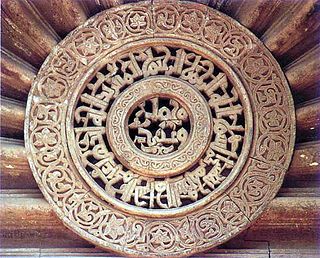
Welayah or Walaya is a general concept of the Islamic faith and a key word in Shia Islam that refers, among other things, to the nature and function of the Imamate.
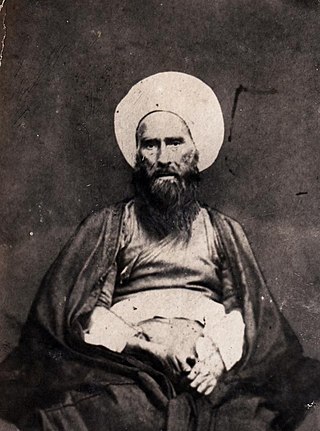
Hadi Sabzavari or Hajj Molla Hadi Sabzavari was an Iranian philosopher, mystic theologian and poet.

Ecotheology is a form of constructive theology that focuses on the interrelationships of religion and nature, particularly in the light of environmental concerns. Ecotheology generally starts from the premise that a relationship exists between human religious/spiritual worldviews and the degradation or restoration and preservation of nature. It explores the interaction between ecological values, such as sustainability, and the human domination of nature. The movement has produced numerous religious-environmental projects around the world.
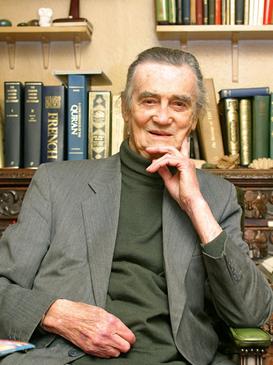
Charles le Gai Eaton was a British diplomat, writer, historian, and Sufi Islamic scholar.
Resacralization is the process of reviving religion or restoring spiritual meanings to various domains of life and thought. It has been termed as the "alter ego" of secularization, which is "a theory claiming that religion loses its holds in modern society". The term rescralization has a variety of connotations in sociology of religion and "very largely draws its meaning" from secularization thesis. According to this viewpoint, religion and spiritual values continue to play an important role in both the private and public realms. Empirical evidence suggests that the world is undergoing a rescralization since religions are gaining ground in contemporary social and political spheres.
The Primordial Tradition is a school of religious philosophy with origins in perennialism, or perennial philosophy, which is in turn a development of the prisca theologia of the Middle Ages. The Primordial Tradition seeks to establish a fundamental origin of religious belief in all authentic religious teachings, adhering to the principle that universal truths are a cross-cultural phenomenon and transcendent of their respective traditions, mythologies, and religious beliefs.
Illuminationism, also known as Ishrāqiyyun or simply Ishrāqi is a philosophical and mystical school of thought introduced by Shahab al-Din Suhrawardi in the twelfth century, established with his Kitab Hikmat al-Ishraq, a fundamental text finished in 1186. Written with influence from Avicennism, Peripateticism, and Neoplatonism, the philosophy is nevertheless distinct as a novel and holistic addition to the history of Islamic philosophy.
In traditionalist philosophy, desacralization of knowledge or secularization of knowledge is the process of separation of knowledge from its divine source—God or the Ultimate Reality. The process marks a paradigmatic shift in understanding of the concept of knowledge in the modern period. It has rejected divine revelations as well as the idea of spiritual and metaphysical foundations of knowledge, confining knowledge to empirical data and reason alone. Although it is a recurrent theme among the writers of the Traditionalist school that began with René Guénon, a French mystic and intellectual who earlier spoke of "the limitation of knowledge to its lowest order", the process of desacralization of knowledge was most notably surveyed, chronicled and conceptualized by the Iranian philosopher Seyyed Hossein Nasr in his 1981 Gifford Lectures that were later published as Knowledge and the Sacred.
In perennial philosophy, scientia sacra or sacred science is a form of sacred knowledge that lies at the heart of both divine revelations and traditional sciences. It recognizes sources of knowledge other than those recognized by modern epistemology, such as divine revelations and intellectual intuition, the latter of which is considered a supra-rational form of knowledge based on the human intellect. Scientia sacra embodies principles and doctrines derived from reason, revelation and intellectual intuition, with the conviction that these sources of knowledge can be reconciled without conflict in a hierarchical order and employed in the human quest to understand different orders of reality. It views the universe as a unified reality centered on God—the Ultimate Reality—whose knowledge is beyond the reach of sense perception and reason. This notion may be traced back to traditional cultures and civilizations, particularly Islamic tradition, which was primarily conceptualized in contemporary language by the Iranian philosopher Seyyed Hossein Nasr in his book Knowledge and the Sacred, originally published in 1981, containing his Gifford Lectures delivered that same year.
In perennial philosophy, tradition means divinely ordained truths or principles revealed or unveiled to mankind, and refers to their implications and applications in different areas of human life and thought. Traditionalists employ the term to refer to immutable principles—the sophia perennis or primordial wisdom—that are rooted in the Divine Center, as opposed to the term "modern," or "modernity," which is divorced and disconnected from the reality of God or the Absolute Truth. The term "tradition" is also used synonymously with revelation, and it encompasses all forms of philosophy, art, and culture that are influenced by it. Although the term has been used in relation to perennial philosophy since René Guénon, and was further developed by his adherents, including Ananda Coomaraswamy and Frithjof Schuon, it was most notably conceptualized by the Iranian philosopher Seyyed Hossein Nasr, who credited Guénon for his idea of tradition.
In traditionalist philosophy, pontifical man is a divine representative who serves as a bridge between heaven and earth. Promethean man, on the other hand, sees himself as an earthly being who has rebelled against God and has no knowledge of his origins or purposes. This concept was notably developed in contemporary language by the Iranian philosopher Seyyed Hossein Nasr.
Resacralization of nature is a term used in environmental philosophy to describe the process of restoring the sacred quality of nature. The primary assumption is that nature has a sanctified aspect that has been lost in modern times as a result of the secularization of contemporary worldviews. These secular worldviews are said to be directly responsible for the spiritual crisis in "modern man", which has ultimately resulted in the current environmental degradation. This perspective emphasizes the significance of changing human perceptions of nature through the incorporation of various religious principles and values that connect nature with the divine. The Iranian philosopher Seyyed Hossein Nasr first conceptualized the theme of resacralization of nature in contemporary language, which was later expounded upon by a number of theologians and philosophers including Alister McGrath, Sallie McFague and Rosemary Radford Ruether.
In traditionalist philosophy, resacralization of knowledge is the reverse of the process of secularization of knowledge. The central premise is that knowledge is intimately connected to its divine source—God or the Ultimate Reality—which has been severed in modern times. The process of resacralization of knowledge seeks to reinstate the role of intellect above and beyond that of reason, as well as to revive the role of traditional metaphysics in acquiring knowledge—especially knowledge of God—by drawing on sacred traditions and sacred science that uphold divine revelations and the spiritual or gnostic teachings of all revealed religions. Iranian philosopher Seyyed Hossein Nasr elaborated on the process of resacralization of knowledge in his book Knowledge and the Sacred, which was presented as Gifford Lectures in 1981.
References
- ↑ Eaton 1983, p. 1.
- 1 2 3 Heer 1993, p. 144.
- 1 2 Eaton 1983, p. 3.
- ↑ Eaton 1983, pp. 3, 4.
- 1 2 Dean 1984, p. 222.
- ↑ Nasr 2000, p. 77.
- ↑ Smith 1984, pp. 112–113.
- 1 2 Aslan 1998, p. 21.
- ↑ Allen 2003, p. 195.
- ↑ Raschid 1983, p. 155.
- ↑ Eaton 1983, p. 2.
- ↑ Eaton 1983, p. 6.
- ↑ Heer 1993, p. 145.
- 1 2 3 4 Eaton 1983, p. 7.
- 1 2 3 Heer 1993, p. 148.
- 1 2 Eaton 1983, p. 9.
- 1 2 3 4 5 Allen 2003, p. 197.
- ↑ Culianu 1992, p. 284.
- ↑ Heer 1993, p. 150.
- ↑ Smith 1984, p. 111.
- ↑ Eaton 1983, p. 10.
- ↑ Danner 1982, p. 248.
- ↑ Largo 1982, p. 221.